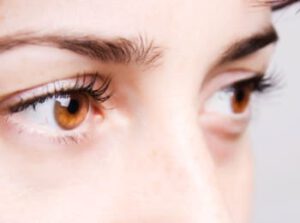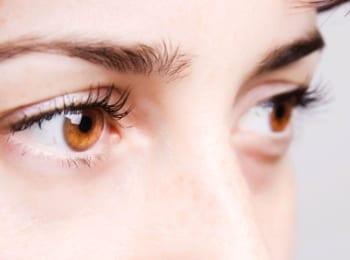A new study is offering a glimpse of the genetic influences on retinal detachment, a common but serious condition that left untreated lead to damaged vision or blindness.

Often triggered by trauma or blow to the eye, several studies have shown that there is also a genetic component that may make some people more prone to retinal detachment than others. A clear indication of that is that retinal detachment runs in families. But up until now, genetic studies have been hampered by their small size.
Big Data
That changed this month after researchers from the University of Edinburgh completed the most extensive genetic study of retinal detachment to date. The study — leveraging data from the UK Biobank — identified variants in 11 genes associated with the condition.
As part of the study, the researchers then used data from 23andMe customers who consented to participate in research to replicate their findings and were able to do so for six of the 11 variants they identified. Two were in genes or gene regions that have never been involved in eye disorders, the others have been previously associated with neural retina thickness, myopia, and glaucoma.
“This genetic approach signposts molecular events leading to a detached retina and shared risks between some eye conditions,” said Veronique Vitart, Ph.D. of the Institute of Genetics at the University of Edinburgh, and the lead author of the study.
More Work Needed
But more work is still needed to determine how these different associations impact the risk for the condition.
“Myopia is a well-known risk factor for retinal detachment but not all myopia risk variants are predisposing to retinal detachment. With increasing genetic findings, it may be possible in the future to devise genetic risk score allowing to identify most at-risk individuals at an early stage” Dr. Vitart said.
The study, published in the journal Human Molecular Genetics, included data from almost 6,000 with some form of retinal detachment who were either UK Biobank participants or had been specifically recruited in clinics across the UK. Those latter were certified by clinicians to have the most common type of retinal detachment, called rhegmatogenous. In the UK Biobank, there were medical records that allowed researchers to indicate the type of retinal detachment.
The researchers then replicated six of the genetic associations they found in a cohort with almost 10,000 23andMe customers who self-reported to have had a retinal detachment and consented to participate in research.
Types of Retinal Detachment
There are three types of retinal detachment. But in each, the retina is pushed away from the back of the eye.
The most common type arises following a tear or hole in the retina. This, in turn, allows vitreous fluid to get behind the retina, pushing it away from the back of the eye. A less common type of retinal detachment is called tractional, which is caused by traction from scared tissues on the retina surface, due most commonly to diabetes. This too can push the retina away from the back. Finally, the third, rare, type is called exudative, and characterized by fluid build-up behind the retina with no retinal tear. It is caused by diverse, usually inflammatory, conditions.
Fortunately, retinal detachment is treatable. If caught early treatment is successful in nine out of 10 people, according to the National Institutes of Health.
To learn more about his study, go to the journal of Human Molecular Genetics.




